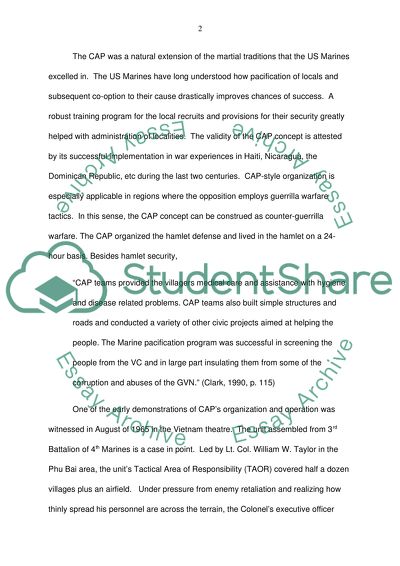Cite this document
(“US Marine Corps Combined Action Program in South Vietnam Article”, n.d.)
Retrieved from https://studentshare.org/military/1456449-successes-of-the-united-states-marine-corps
Retrieved from https://studentshare.org/military/1456449-successes-of-the-united-states-marine-corps
(US Marine Corps Combined Action Program in South Vietnam Article)
https://studentshare.org/military/1456449-successes-of-the-united-states-marine-corps.
https://studentshare.org/military/1456449-successes-of-the-united-states-marine-corps.
“US Marine Corps Combined Action Program in South Vietnam Article”, n.d. https://studentshare.org/military/1456449-successes-of-the-united-states-marine-corps.


